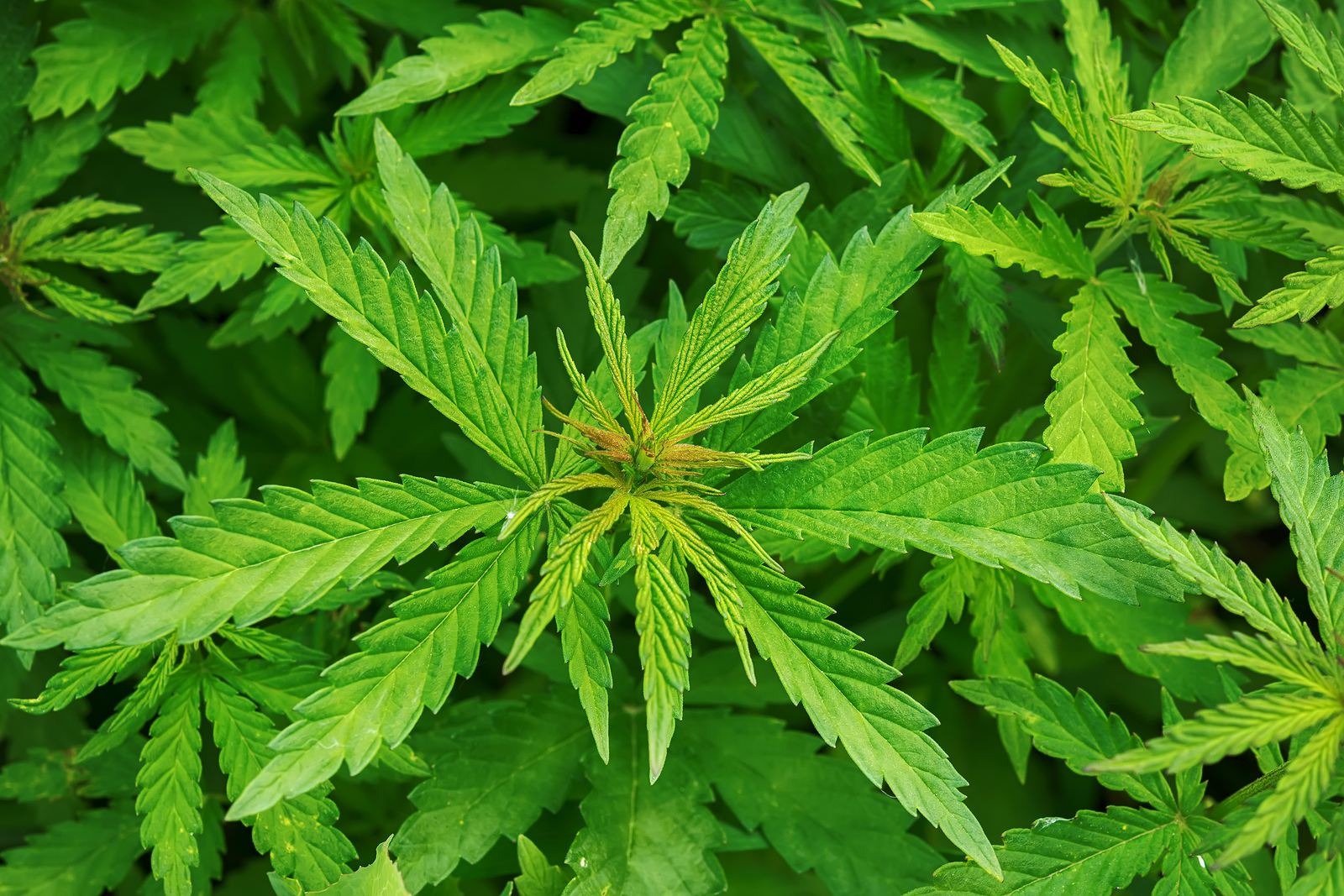What Does CBD Oil Smell Like?
As the popularity of cannabidiol (CBD) oil continues to surge, a common question emerging among consumers pertains to its olfactory characteristics. Specifically, does CBD oil smell like cannabis? This inquiry is not surprising given that CBD is a derivative of cannabis plants.
To address this, it’s essential to understand the difference between hemp and marijuana, two types of cannabis from which CBD can be extracted. Moreover, understanding the role of terpenes in shaping the aroma profile of these plants also proves useful.
A further examination of various types of CBD products may reveal variations in scent owing to different manufacturing processes and additives. This article aims to provide an objective analysis of what CBD oil smells like by delving into these topics in detail, providing readers with comprehensive insights on this intriguing aspect of one of today’s most prominent wellness trends.
- The smell of CBD oil can range from earthy and nutty to grassy, with hints of sweetness or sourness.
- Well-manufactured CBD products should not have a strong weed smell.
- Terpenes are responsible for the distinct aroma of cannabis and CBD oil.
- CBD products can be categorized as Full-Spectrum CBD, Broad-Spectrum CBD, and CBD Isolate.
What Does CBD Smell Like? Does it smell like weed?
Investigating the aroma of CBD oil reveals a complexity that can range from earthy and nutty to grassy, often carrying a slight undertone of sweetness or sourness depending on the specific hemp strain utilized. However, while some may associate this olfactory profile with that of weed due to shared terpenes, it is important to note that well-manufactured CBD products should largely remove this association by eliminating any overt weed smell.
This ensures that even when asked, What does CBD oil smell like? responses should not immediately equate its scent with marijuana. Thus, although initial speculation might pose the question ‘does CBD oil smell like weed?’ due to commonalities in their terpene profiles, quality processing within various CBD spectrums greatly reduces this likelihood.
Does CBD Smell Like Weed?
Exploring the sensory experiences associated with Cannabidiol (CBD), a compound derived from the Cannabis plant, provides valuable insights into its nature and potential uses.
The question ‘Does CBD smell like weed?’ prompts an in-depth examination of the characteristics of this substance, which necessitates understanding the Cannabis plant itself.
By dissecting this inquiry, we can develop a comprehensive perspective on various aspects of CBD, including its structure, scent profile, and correlation with other components of the Cannabis plant.
Understanding the Cannabis Plant
In order to understand the complexity of the cannabis plant, it is important to be able to tell the difference between hemp and marijuana, which are both in the same genus but have very different uses, CBD and THC levels, cultivation methods, and physical traits.
- Hemp primarily serves industrial applications due to its seeds, oil, and fiber quality. It contains high levels of CBD—a cannabinoid renowned for therapeutic effects—and minimal THC content.
- Marijuana is cultivated mainly for recreational or medicinal use because it possesses high THC levels—responsible for psychoactive properties—and a low CBD concentration.
- The type of CBD oil derived from these plants affects its smell; a full-spectrum oil may exude an earthy smell due to the presence of various cannabinoids.
- The carrier oil used can also influence the overall aroma, thus affecting understanding the cannabis plant’s aroma profile.
Hemp vs. Marijuana: What’s the Difference?
Understanding the distinctions between hemp and marijuana, particularly in relation to THC content, uses, and cultivation methods, is crucial to grasping their unique characteristics and applications.
Hemp contains less than 0.3% THC and is often cultivated for its seeds, oil, and fiber. A quality CBD oil smell can be derived from hemp.
Marijuana, on the other hand, holds higher concentrations of THC, which lend it psychoactive properties that contribute to the distinctive smell of marijuana.
The cultivation methods also differ significantly; hemp grows tall with minimal branching, while marijuana plants are typically bushier.
In summary, when comparing hemp vs. marijuana based on these factors: THC content and uses, including whether CBD oil will smell bad or not, largely depend on its source plant.
What Are Terpenes?
Having distinguished between hemp and marijuana, specifically in relation to the characteristic scent of CBD oil, it is now essential to delve deeper into the components responsible for such distinct olfactory experiences: terpenes.
Terpenes are fundamental constituents of cannabis that contribute significantly to its unique aroma and flavor profiles.
The subsequent discourse will center on exploring the diverse range of terpene scents, providing a comprehensive understanding of what individual terpenes smell like.
What do Terpenes Smell Like?
Terpenes, the aromatic compounds found in many plants, including cannabis, are responsible for the distinctive scents associated with different strains of this plant. These terpenes, such as Myrcene (earthy fragrance), Pinene (herbaceous smell), Caryophyllene (spicy odor), Linalool (floral aroma), and Humulene, each contribute uniquely to the overall aroma profile of a particular strain.
It is crucial to comprehend these unique terpene profiles in order to appreciate their significant impact on the sensory experience that various cannabis strains offer.
Myrcene
Renowned as the most abundant terpene found in cannabis, myrcene exudes an earthy and slightly fruity aroma, reminiscent of cloves and grapes, frequently associated with indica strains. This terpene significantly contributes to the distinct smell of cannabis.
| Terpene | Aroma | Cannabis Strain |
|---|---|---|
| Myrcene | Earthy and Fruity | Indica |
Myrcene’s presence can cause a CBD product to smell like marijuana due to its odor, which mirrors what terpenes smell like.
Pinene
Among the most prevalent terpenes in cannabis is pinene, recognized for its distinct, musky forest scent reminiscent of pine trees.
This aroma can influence the smell and taste of CBD oil, making it smell a bit like marijuana.
Some users enjoy the smell similar to that of weed or pine trees due to pinene’s presence.
It contributes to both the therapeutic appeal and unique scent of CBD, altering perceptions about what CBD oil should smell like.
Caryophyllene
Caryophyllene, a significant terpene found in CBD products, stands out due to its distinctive peppery and spicy notes, further adding complexity to the aromatic profile of these wellness aids.
It has four key characteristics: nn1. A strong smell, much like black pepper.
- Interaction with CB2 endocannabinoid receptors.
- Classification as a ‘dietary cannabinoid’.
- Enhancement of the overall smell and flavor of quality CBD products that contain this terpene.
Linalool
Linalool, a less common terpene with a distinctly floral scent reminiscent of lavender, plays an integral role in shaping the flavor profile of various CBD products.
This unique aroma can contribute to the overall ‘smell of weed’ experience when using hemp oil or broad-spectrum oils.
Notably, linalool’s presence in hemp-derived CBD products can enhance their appeal by adding a pleasing fragrance that sets them apart from other CBD oils.
Humulene
Humulene significantly contributes to the distinctive aroma and potential therapeutic advantages associated with various CBD products with its earthy, woodsy scent reminiscent of hops. Humulene’s distinctive smell can affect the overall perception of what CBD oil smells like.
| Cannabis Strains High in Humulene | Potential Therapeutic Benefits |
|---|---|
| Sour Diesel | Anti-inflammatory, analgesic |
| White Widow | Antibacterial, appetite suppressant |
| Girl Scout Cookies | Anti-cancerous properties, weight loss aid |
This terpene also features prominently in premium CBD products due to its proposed appetite-suppressant effects.
Types of CBD Products
Following a comprehensive exploration of terpenes, their significance in influencing the aroma of CBD oil, and their potential therapeutic benefits, it is essential to delve into the variety of CBD products available.
The spectrum of offerings can broadly be categorized into Full-Spectrum CBD, Broad-Spectrum CBD, and CBD Isolate.
These classifications differ primarily on the basis of cannabinoid content and offer unique benefits, which will be examined in thorough detail.
Full-Spectrum CBD
Full-spectrum CBD, unlike other types of CBD products, contains all the natural compounds found in the cannabis plant, such as cannabinoids, terpenes, and essential oils.
This type of CBD oil is often used for its therapeutic benefits because it delivers an entourage effect. The entourage effect refers to the combined influence of all these components working synergistically rather than individually for enhanced health advantages.
Full-spectrum CBD oil is extracted and then combined with a carrier oil like medium-chain triglyceride oil to create a full-spectrum CBD tincture.
This differs from broad-spectrum CBD, which lacks THC (a potent cannabinoid), and from CBD isolate, which only contains pure CBD devoid of any other naturally occurring cannabis plant compounds.
Broad-Spectrum CBD
Broad-Spectrum CBD, akin to full-spectrum CBD in its diverse range of cannabinoids and terpenes, undergoes a filtration process to remove any trace amounts of THC. As such, it is a type of oil that provides the therapeutic benefits of full-spectrum CBD but without the potential psychoactive effects linked to THC.
- This classifies Broad-Spectrum CBD as an attractive choice in the CBD market for those desiring the effects of CBD but are cautious about THC.
- Some CBD manufacturers may add terpenes back into their products after extraction; however, this does not equate to natural retention.
- The use of Broad-spectrum CBD enables users to experience hemp-derived CBD products without ingesting THC.
- Making Broad-Spectrum CBD at home could involve complex processes and thus require careful consideration before attempting it.
Ultimately, choosing Broad-Spectrum over full-spectrum depends on individual preferences and needs.
CBD Isolate
Diving into the world of CBD products, one encounters the term ‘CBD isolate’, representing the purest form of this compound, boasting up to 99% CBD content and completely devoid of other cannabinoids, terpenes, and flavonoids.
It’s produced by filtering all plant material from hemp-derived CBD products except for the CBD itself. The result is a crystalline powder that can be combined with a carrier like MCT oil to make CBD oil.
This product offers a unique advantage: it lacks any discernible scent or flavor due to its isolation process. Hence, it’s ideal for those who wish to use pure CBD in cooking or mix it with food without altering taste profiles.
This differentiates it from broad-spectrum CBD oil, which retains some natural cannabis elements.
Conclusion
In conclusion, the scent of CBD oil largely depends on its source and the presence of terpenes. Despite common misconceptions, it does not necessarily smell like marijuana due to the distinct differences between hemp and marijuana plants. Terpenes impart unique aromas to various types of CBD products.
Thorough knowledge about these aspects can dispel any confusion or apprehension concerning the aroma of CBD oil.
FAQ
CBD oil can have a variety of scents depending on the type and quality. Some CBD oils have an earthy, herbal smell, while others may have a more floral or fruity aroma.
No, CBD oil does not typically smell like weed or marijuana. CBD oil is derived from the hemp plant, which is a different variety of cannabis than the marijuana plant. While both plants belong to the Cannabis family, they have different chemical compositions and produce different smells.
The smell of CBD oil can be influenced by various factors, including the type of CBD oil (full spectrum, broad spectrum, or isolate), the carrier oil used (such as MCT oil or hemp seed oil), and the presence of terpenes. Terpenes are aromatic compounds found in hemp and cannabis plants that contribute to their scent and flavor.
The smell of CBD oil may be subjective, as different people have different scent preferences. Some individuals may find the scent of CBD oil unpleasant, while others may enjoy its natural, earthy aroma.
CBD flower can have a similar smell to marijuana because they both come from the cannabis plant. However, CBD flower typically contains low levels of THC, the psychoactive compound in marijuana, so it does not produce the potent scent associated with marijuana.
No, smoking CBD does not typically make you smell like weed. CBD does not produce the strong odor associated with marijuana, so you shouldn’t have to worry about smelling like weed after smoking CBD.
The aroma of CBD oil can vary depending on personal preference. Some people may prefer the natural, earthy smell of full spectrum CBD oil, while others may prefer the odorless nature of CBD isolates. It’s best to sample different types of CBD oil to find the scent that you find most appealing.
CBD oil can have a similar smell to marijuana due to the presence of terpenes, which are also found in marijuana. However, the smell of CBD oil is typically milder and less pungent compared to the strong smell of marijuana.
No, using CBD products will not make you smell like weed or marijuana. CBD products, including oils, topicals, and edibles, do not contain enough THC to produce the characteristic smell associated with marijuana.
CBD oil can have a mild, earthy taste and smell due to its natural plant compounds. However, the taste and smell of CBD oil can vary depending on the brand, extraction method, and added flavorings.
Resources:
Gilbert, Avery N., and Joseph A. DiVerdi. “Consumer perceptions of strain differences in Cannabis aroma.” PLoS One 13.2 (2018): e0192247. https://journals.plos.org/plosone/article?id=10.1371/journal.pone.0192247
Mediavilla, Vito, and Simon Steinemann. “Essential oil of Cannabis sativa L. strains.” J. Int. Hemp Assoc 4 (1997): 80-82. https://druglibrary.org/olsen/hemp/IHA/jiha4208.html
Chen, Chang, and Zhongli Pan. “Cannabidiol and terpenes from hemp–ingredients for future foods and processing technologies.” Journal of Future Foods 1.2 (2021): 113-127. https://www.sciencedirect.com/science/article/pii/S2772566922000015










